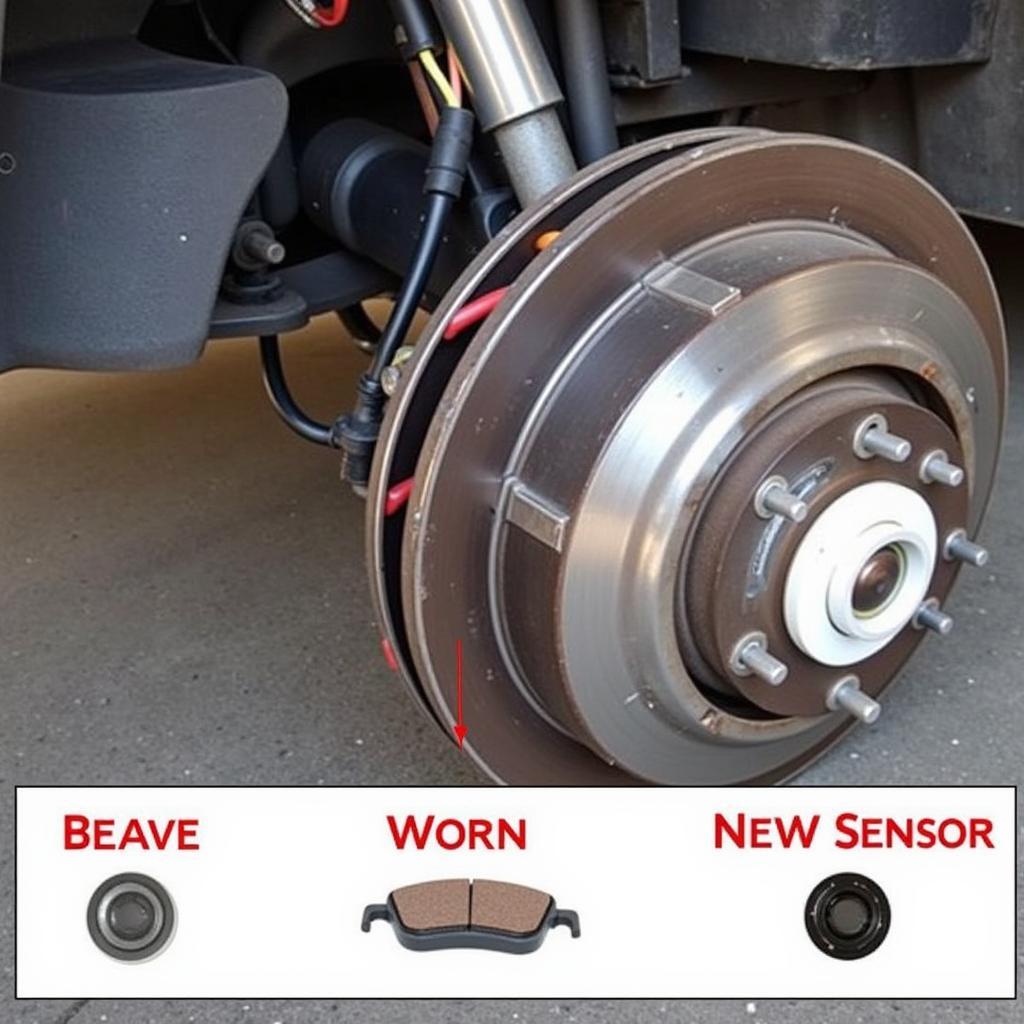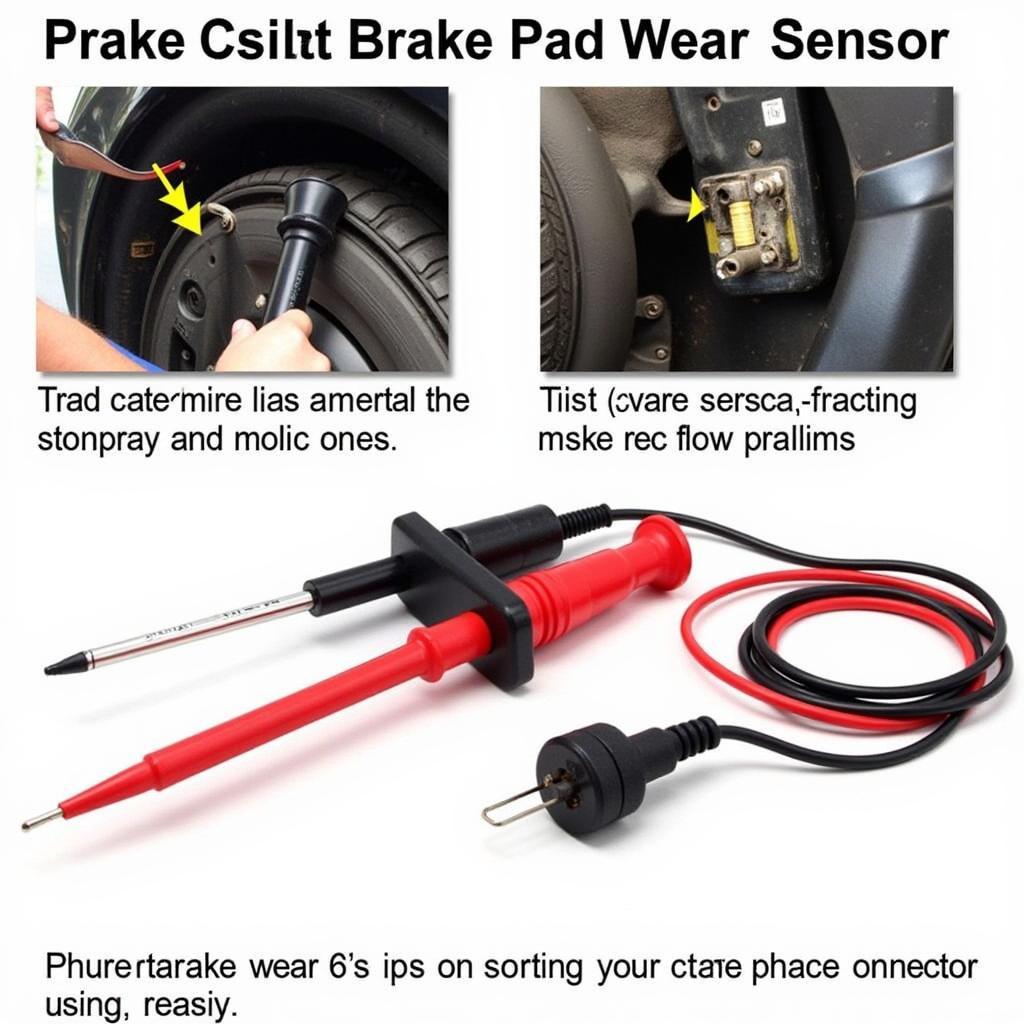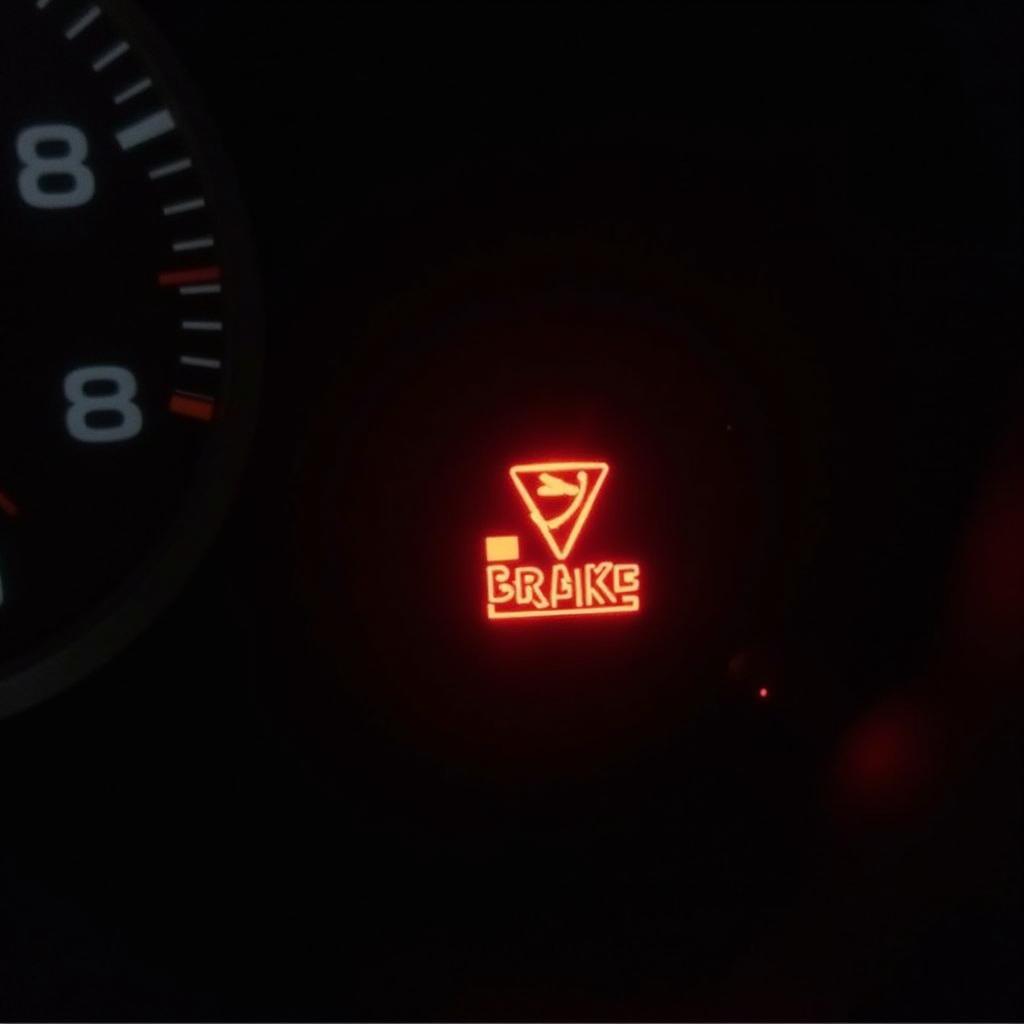The 2008 Passat brake pad warning light is a crucial safety feature designed to alert you when your brake pads are wearing thin and require replacement. Ignoring this warning can lead to costly repairs and compromise your safety. This guide provides a detailed overview of the brake pad warning light in a 2008 Passat, including its causes, diagnosis, and solutions.
If your 2008 Passat brake pad warning light illuminates, it’s essential to address the issue promptly. This light can be triggered by various factors, including worn brake pads, a faulty brake pad wear sensor, or problems with the brake system’s electrical components. Understanding these potential causes is crucial for accurate diagnosis and effective repair. Furthermore, a timely response can prevent further damage and ensure your safety on the road. Don’t delay in investigating the warning light as it signals a potential safety hazard.
Understanding the 2008 Passat Brake Pad Warning Light System
The brake pad warning light system comprises several components working together. The primary component is the brake pad wear sensor, a small wire embedded within the brake pad material. As the brake pad wears down, the sensor eventually makes contact with the brake rotor, completing an electrical circuit and triggering the warning light on the dashboard. Additionally, the system includes wiring and connectors that transmit the signal from the sensor to the dashboard indicator. Understanding how these components interact is essential for troubleshooting.
A quick check you can do is to inspect your brake pads visually. Look through the spaces between the wheel spokes to see the brake pad’s outer edge. If the pad material is less than ¼ inch thick, it’s likely time for new brake pads.
 2008 Passat Brake Pad Wear Sensor Location and Condition
2008 Passat Brake Pad Wear Sensor Location and Condition
Diagnosing the 2008 Passat Brake Pad Warning Light
While worn brake pads are the most common reason for the warning light, other factors can contribute. A faulty brake pad wear sensor can trigger the light even with sufficient pad material remaining. Damaged wiring or corroded connectors can also disrupt the signal, causing a false alarm. It’s also possible for a malfunctioning instrument cluster to illuminate the warning light erroneously.
If you’re comfortable working on your car, you can check the brake pad wear sensor yourself using a multimeter. Disconnect the sensor connector and check for continuity. If the sensor is intact, the multimeter should show a reading.
 Testing 2008 Passat Brake Pad Sensor with Multimeter
Testing 2008 Passat Brake Pad Sensor with Multimeter
Solutions for a 2008 Passat Brake Pad Warning Light
Replacing worn brake pads is the typical solution when the warning light comes on. Always replace brake pads in axle sets (both front or both rear) to maintain balanced braking. If you identify a faulty sensor, replace it alongside the brake pads. If the issue lies with the wiring or connectors, repair or replace them as needed. In rare cases, a faulty instrument cluster may require replacement.
Remember, working on brakes requires specific knowledge and tools. If you’re unsure about any step, consult a qualified mechanic. Driving with worn brake pads is dangerous and can lead to brake failure.
What to do if the 2008 Passat Brake Pad Warning Light Stays On After Pad Replacement
Sometimes, even after replacing the brake pads and sensor, the warning light might persist. This could be due to a faulty new sensor, improper installation, or a lingering issue with the wiring. Double-check all connections and ensure the new sensor is correctly installed. If the problem persists, a diagnostic scan tool can help pinpoint the exact cause.
Consider checking related articles on brake pad warning lights for other vehicles, like the Ford Transit or Mini Cooper S, to gain a broader understanding of the system and potential solutions. These resources can offer valuable insights into similar issues across different car models. For example, the guide on resetting the ford transit reset brake pad warning light might provide helpful information about sensor reset procedures. Similarly, the article on 2003 mini cooper s brake warning light could offer insights into diagnosing wiring issues.
Conclusion
Addressing the 2008 Passat brake pad warning light promptly ensures your safety and prevents further damage to the braking system. By understanding the system, diagnosing the issue, and implementing the correct solutions, you can maintain optimal braking performance and peace of mind. Ignoring the warning light can lead to severe consequences, including brake failure. Always prioritize your safety and consult a professional if you’re uncertain about any aspect of brake repair.
FAQ
- How often should I check my brake pads? It’s recommended to inspect your brake pads every 12,000 miles or during routine maintenance.
- Can I drive with the brake pad warning light on? While you can technically drive a short distance, it’s highly discouraged. Worn brake pads compromise stopping power, putting you at risk.
- How much does it cost to replace brake pads on a 2008 Passat? The cost varies depending on the type of brake pads and labor rates. Expect to pay between $150 and $300 per axle.
- Can I replace brake pads myself? If you’re mechanically inclined, you can. However, it requires specific tools and knowledge. If unsure, consult a professional.
- What causes the brake pad warning light to come on if the pads are new? A faulty sensor, improper installation, or wiring issues can cause the light to stay on even with new pads.
- Why is my 2008 Passat brake pad warning light flashing? A flashing light can indicate a more serious problem with the brake system, such as low brake fluid.
- How do I reset the 2008 Passat brake pad warning light after replacing the pads? In most cases, the light will reset automatically after replacing the pads and sensor and driving for a short distance. If it doesn’t, a diagnostic scan tool might be required.


